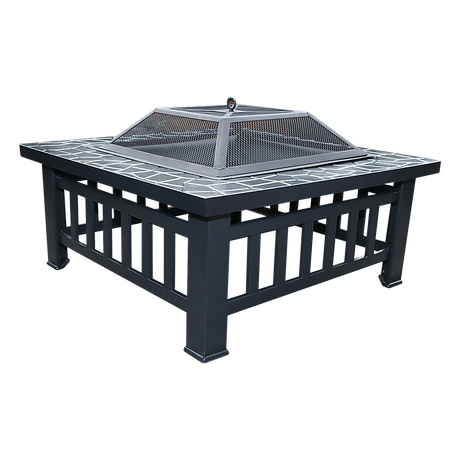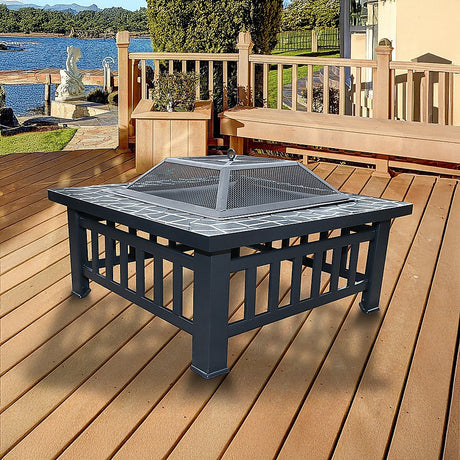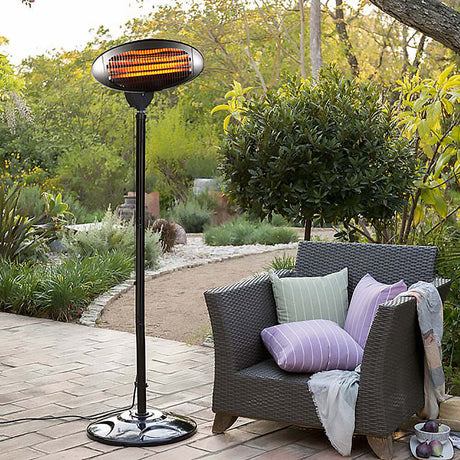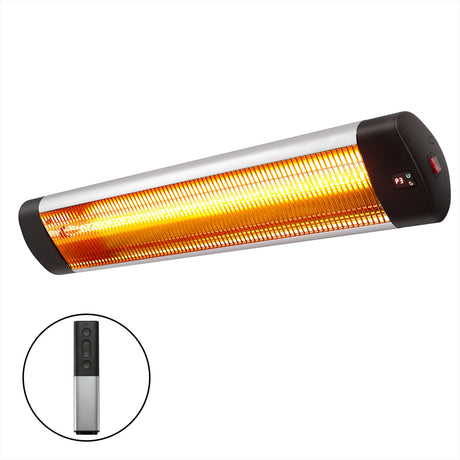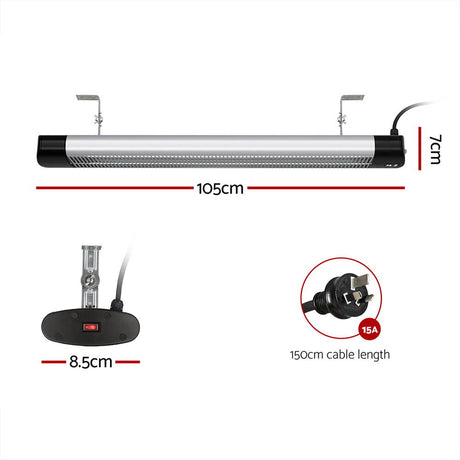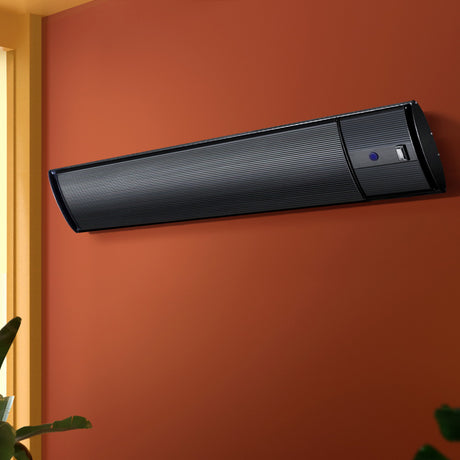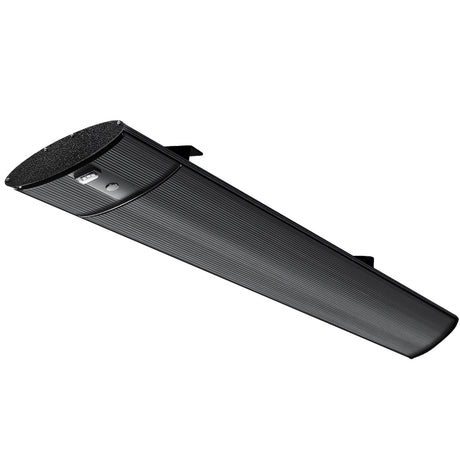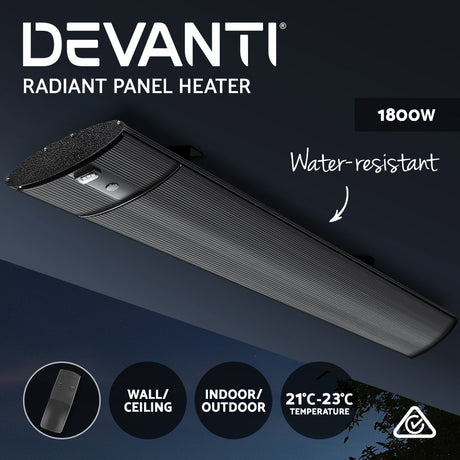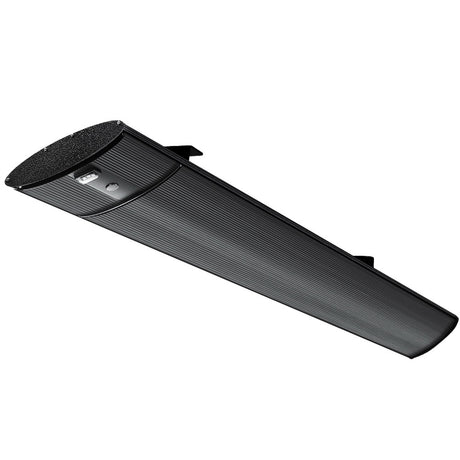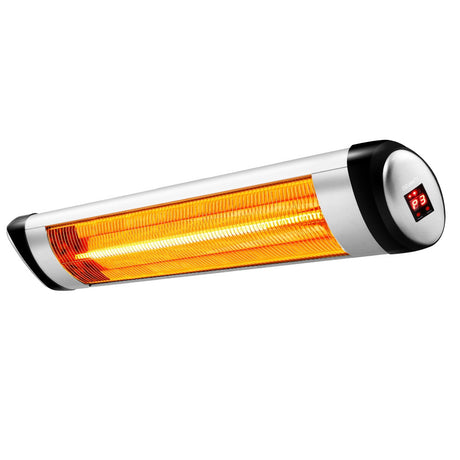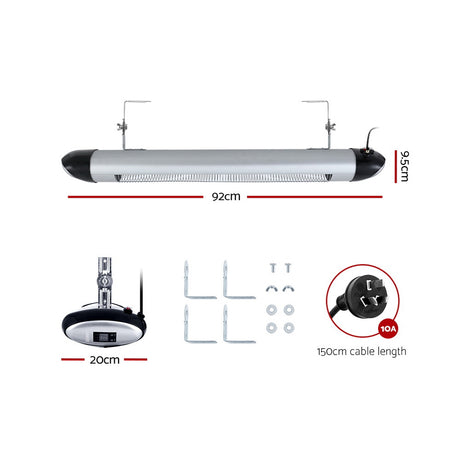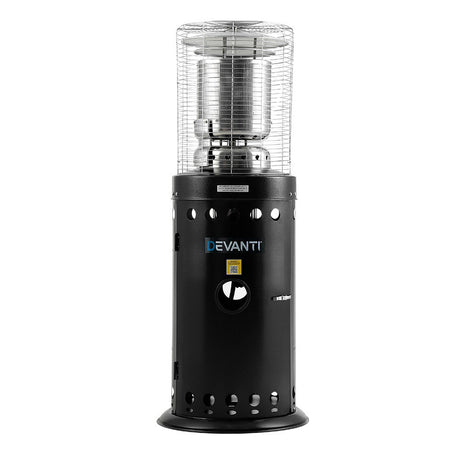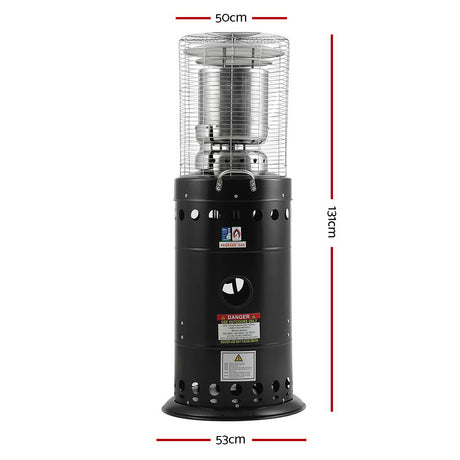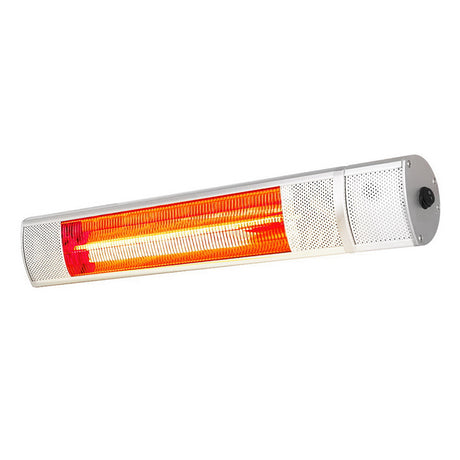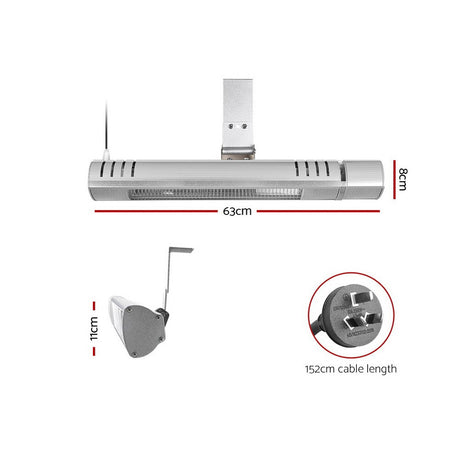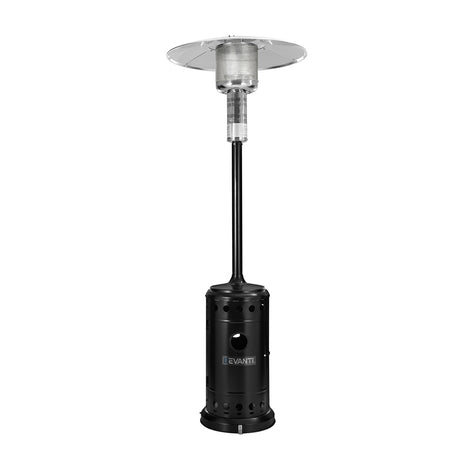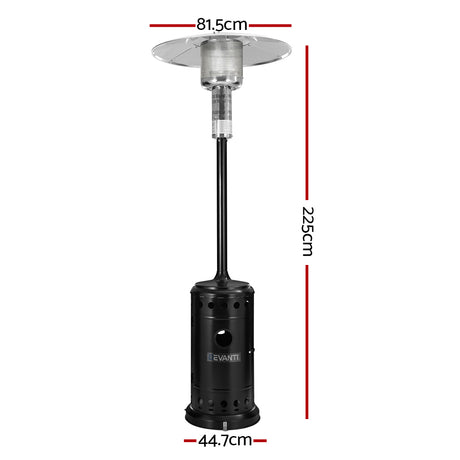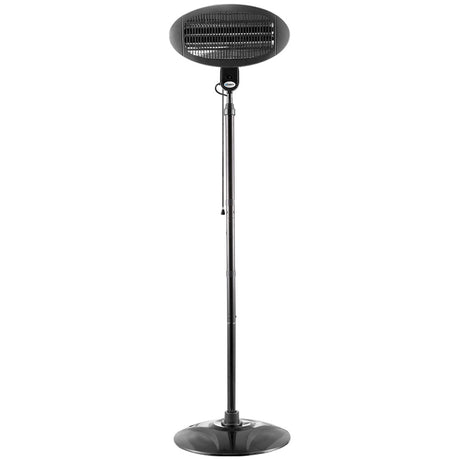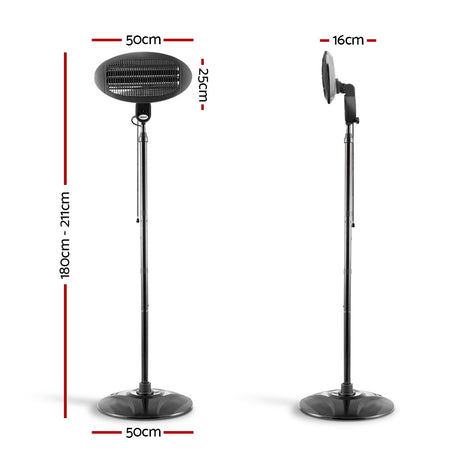The Most Affordable Heating Options for Your Home
As energy prices continue to rise, finding affordable heating options for your home is more important than ever. Whether you're looking to reduce your carbon footprint or simply save money on your utility bills, there are several cost-effective heating solutions to consider. Here are some of the most affordable heating options that can keep your home warm and cosy without breaking the bank.
1. Electric Space Heaters
Electric heaters are a popular choice for those looking to heat individual rooms without the need to warm the entire house. They are relatively inexpensive to purchase and can be moved easily from room to room. Look for models with energy-saving features like programmable timers and adjustable thermostats to maximize efficiency.
Pros:
- Low upfront cost
- Portable and easy to use
- Ideal for small spaces
Cons:
- Can be costly to operate if used extensively
- Not suitable for whole-house heating
2. Programmable Thermostats
Upgrading to a programmable thermostat can significantly reduce your heating costs. These devices allow you to set specific temperatures for different times of the day, ensuring that your heating system only runs when necessary. By lowering the temperature when you're asleep or away from home, you can save a considerable amount on your energy bills.
Pros:
- Affordable and easy to install
- Can reduce energy usage and costs
- Enhances comfort with personalized settings
Cons:
- Requires initial setup and programming
- Savings depend on user habits
3. Heat Pumps
Heat pumps are an efficient and cost-effective way to heat your home. They work by extracting heat from the outside air (even in cold weather) and transferring it indoors. Modern heat pumps are highly efficient and can provide both heating and cooling, making them a versatile investment.
Pros:
- Energy-efficient and environmentally friendly
- Can lower heating costs significantly
- Provides both heating and cooling
Cons:
- Higher upfront cost compared to other options
- May require professional installation
4. Pellet Stoves
Pellet stoves are an excellent alternative to traditional wood-burning stoves. They use compressed wood pellets as fuel, which are typically cheaper and more sustainable than traditional firewood. Pellet stoves are highly efficient and can heat large areas of your home.
Pros:
- Lower fuel costs compared to traditional wood
- High efficiency and low emissions
- Can provide substantial heating for large spaces
Cons:
- Requires regular maintenance and cleaning
- Initial purchase and installation can be costly
5. Radiant Floor Heating
Radiant floor heating is a luxurious yet surprisingly affordable heating option. It involves installing heating elements beneath your flooring, providing consistent and comfortable warmth throughout your home. While the installation cost can be high, radiant floor heating is highly efficient and can lead to significant energy savings over time.
Pros:
- Provides even and consistent heat
- Energy-efficient and can reduce heating costs
- Increases comfort with no cold spots
Cons:
- High initial installation cost
- Best suited for new constructions or major renovations
6. Insulation and Weatherproofing
While not a heating system per se, improving your home's insulation and weatherproofing can significantly reduce your heating costs. By sealing drafts, adding insulation to your attic, and upgrading windows and doors, you can keep the warm air inside and reduce the workload on your heating system.
Pros:
- Can lead to substantial energy savings
- Improves overall comfort and energy efficiency
- Often eligible for rebates and incentives
Cons:
- Requires an initial investment
- Effectiveness depends on the quality of installation
Conclusion
When it comes to affordable heating options, there are several effective solutions to choose from. Whether you opt for portable electric space heaters, invest in a heat pump, or improve your home's insulation, each option has its own set of benefits and drawbacks. By considering your specific needs and budget, you can find the best heating solution to keep your home warm and comfortable while saving money on your energy bills.
Electric Fireplace vs. Gas Heater: Which Is Better for Your Home?
When it comes to heating your home, both electric fireplaces and gas heaters offer distinct advantages and disadvantages. Understanding these differences can help you make an informed decision about which option is best suited to your needs. Here's a comparison of electric fireplaces and gas heaters to help you choose the right heating solution for your home.
Electric Fireplace
Pros:
-
Ease of Installation
- Electric fireplaces are generally easy to install. They don't require venting or a chimney, which means you can place them virtually anywhere in your home. Most models simply plug into a standard electrical outlet.
-
Safety
- Electric fireplaces are considered safer than gas heaters because they don’t involve real flames. This reduces the risk of fire hazards and carbon monoxide poisoning. They also typically have cool-to-the-touch surfaces, making them safe around children and pets.
-
Energy Efficiency
- Electric fireplaces convert almost all the electricity they use into heat, making them highly efficient. There's no heat loss through vents or chimneys.
-
Low Maintenance
- These units require minimal maintenance compared to gas heaters. There’s no need for annual inspections, cleaning of vents, or chimney upkeep.
-
Aesthetic Appeal
- Electric fireplaces come in a wide range of styles and designs. They can mimic the look of a real fire with LED technology, adding ambiance to any room without the mess of ashes or soot.
Cons:
-
Operating Costs
- Depending on electricity rates, operating an electric fireplace can be more expensive than using natural gas. However, this varies by region and usage.
-
Heat Output
- Electric fireplaces generally produce less heat compared to gas heaters. They are best suited for supplemental heating rather than being the primary heat source for large spaces.
Gas Heater
Pros:
-
Heat Output
- Gas heaters typically provide more heat than electric fireplaces, making them suitable for heating larger areas or even whole homes. They can quickly raise the temperature in a room.
-
Operating Costs
- Natural gas is often cheaper than electricity, making gas heaters more cost-effective to run in many regions. This can lead to significant savings on your heating bills.
-
Reliability
- Gas heaters can continue to operate during power outages, ensuring your home stays warm even when the electricity is out.
-
Efficiency
- Modern gas heaters are highly efficient, especially those with sealed combustion units. They draw air from outside for combustion, reducing heat loss and improving energy efficiency.
Cons:
-
Installation Complexity
- Installing a gas heater is more complex and expensive than an electric fireplace. It requires proper venting, and in some cases, a connection to a natural gas line or propane tank.
-
Safety Concerns
- Gas heaters pose a higher risk of fire hazards and carbon monoxide leaks. It's essential to have them inspected regularly and install carbon monoxide detectors in your home.
-
Maintenance
- Gas heaters require more maintenance than electric fireplaces. This includes annual inspections, cleaning of vents, and possible replacement of parts like pilot lights and thermocouples.
-
Aesthetic and Noise
- While gas heaters are functional, they may not offer the same aesthetic appeal as electric fireplaces. Additionally, some models can be noisy due to the combustion process and blower fans.
Conclusion
Choosing between an electric fireplace and a gas heater depends on your specific needs, preferences, and home setup. If you prioritize ease of installation, safety, and low maintenance, an electric fireplace might be the best choice. On the other hand, if you need a powerful heating solution that can cover larger areas and potentially lower operating costs, a gas heater could be more suitable. Consider the pros and cons of each option to determine the best heating solution for your home.
Best Outdoor Heating Options for Your Home
Creating a comfortable and inviting outdoor space is a great way to extend your living area and enjoy the outdoors year-round. With the right heating options, you can make your patio, deck, or backyard warm and cozy, even during the cooler months. Here are some of the best outdoor heating options to consider:
1. Patio Heaters
Types:
- Propane Patio Heaters: These are the most common type of patio heaters. They use propane gas to generate heat and can warm a large area. They are often freestanding and portable, making them versatile for different outdoor spaces.
- Electric Patio Heaters: These heaters use electricity to produce radiant heat. They can be mounted on walls, ceilings, or placed on tables. Electric patio heaters are more environmentally friendly and require less maintenance than propane heaters.
- Natural Gas Patio Heaters: These heaters are connected to your home’s natural gas line, providing a continuous supply of fuel. They are ideal for permanent installations and can heat large areas efficiently.
Pros:
- Efficient and effective in heating large outdoor areas
- Available in various styles and designs
- Portable options provide flexibility
Cons:
- Propane heaters require fuel tank refills
- Natural gas heaters need professional installation
- Electric heaters might have higher operating costs depending on electricity rates
2. Fire Pits and Fire Tables
Fire pits and fire tables add warmth and ambiance to any outdoor space. They can be wood-burning, propane, or natural gas-fueled.
Types:
- Wood-Burning Fire Pits: These provide a traditional campfire experience with the crackle and aroma of burning wood. They are relatively inexpensive but require more maintenance.
- Propane Fire Pits: These are convenient and easy to use, with adjustable flame controls. They produce less smoke and are cleaner than wood-burning options.
- Natural Gas Fire Pits: Similar to propane fire pits but connected to a natural gas line, offering a continuous fuel supply without the need for refills.
Pros:
- Provides both heat and a focal point for outdoor gatherings
- Various fuel options to suit different preferences
- Enhances the aesthetic appeal of outdoor spaces
Cons:
- Wood-burning pits require regular cleaning and maintenance
- Propane and natural gas options need proper ventilation
- Higher upfront cost for gas-fueled models
3. Outdoor Fireplaces
Outdoor fireplaces are a permanent and stylish addition to any patio or backyard. They can be custom-built or purchased as prefabricated units.
Pros:
- Creates a cozy and attractive focal point
- Can provide substantial heat for larger areas
- Adds value to your home
Cons:
- High installation cost and requires professional setup
- Less portable and flexible compared to other options
- Requires regular maintenance and cleaning
4. Infrared Heaters
Infrared heaters use radiant heat to warm objects and people directly rather than heating the air. They are highly efficient and can be mounted on walls or ceilings.
Pros:
- Energy-efficient and environmentally friendly
- Provides instant heat and warms specific areas effectively
- Low maintenance with no need for fuel refills
Cons:
- Limited range compared to other heating options
- Requires an electrical outlet and may have higher operating costs
- Fixed installation reduces portability
5. Heated Outdoor Furniture
Heated outdoor furniture integrates heating elements into the furniture itself, such as heated cushions, tables, and chairs. This option provides localized warmth directly where you need it.
Pros:
- Discreet and integrated heating solution
- Provides targeted warmth for maximum comfort
- Enhances the usability of outdoor furniture in cooler weather
Cons:
- Higher upfront cost for heated furniture
- Limited heating range
- Requires access to an electrical outlet
Conclusion
Choosing the right outdoor heating option depends on your specific needs, budget, and the layout of your outdoor space. Patio heaters are versatile and effective for larger areas, while fire pits and outdoor fireplaces add ambiance and warmth. Infrared heaters offer energy-efficient, targeted heating, and heated outdoor furniture provides discreet and localized warmth. By considering these options, you can create a comfortable and inviting outdoor environment to enjoy throughout the year.









